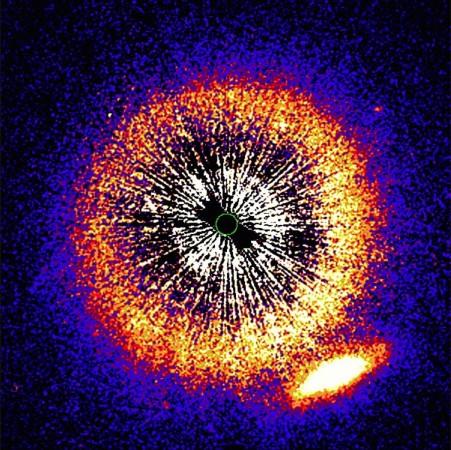
NASA's Hubble telescope is known for capturing stunning space images and it captured another snap of a distant galaxy which hides behind a star dubbed HD 107146.
Also Read: NASA's Hubble discovers the brightest galaxies of the universe!
The image portrays a blur of jagged spikes, speckled noise, and weird, clashing colours. The NASA image appears as a smudge to the lower right as it starts aligning with and passes behind the debris of HD 107146, this event is known as transit.
The star is located nearer to us within the Milky Way and is approximately at 90 light-years away from Earth.
In the latest image captured by Hubble, the star appears like a big blob in the middle of the image which is encircled in green. The star can be seen blanketed with yellow, orange and red dots which are a mix of various debris that orbit the star.
The NASA researchers compared the disc of debris surrounding HD 107146 to the cluster of asteroids present in the Kuiper Belt in our Solar system.
"It's an exciting place in the cosmos because of how much the star shares with our own sun, but there's a problem: that big bright patch of nonsense in the lower right corner," a NASA statement said.
A detailed study of this system is possible because of the much more distant galaxy — nicknamed the 'Vermin Galaxy' by some to reflect their annoyance at its presence — as the star passes in front of it. The unusual pairing was first observed in 2004 by Hubble's Advanced Camera for Surveys, and again in 2011 by Hubble's Space Telescope Imaging Spectrograph.
The galaxy will not be fully obscured until around 2020, but interesting science can be done even while the galaxy is only partly obscured. Light from the galaxy will pass through the star's debris disks before reaching our telescopes, allowing us to study the properties of the light and how it changes, and thus infers the characteristics of the disk itself, the researchers said in the statement.

















